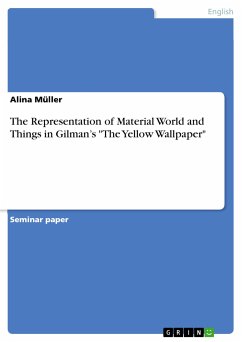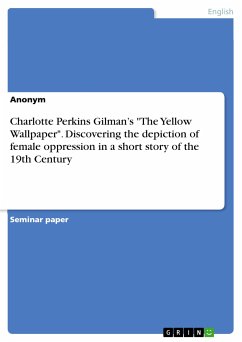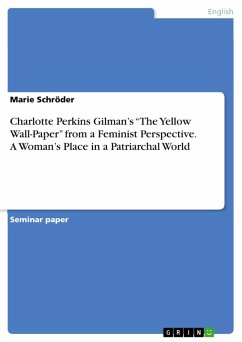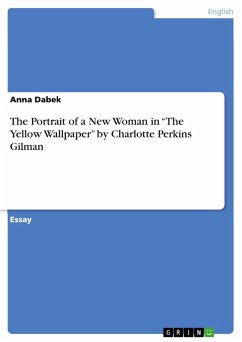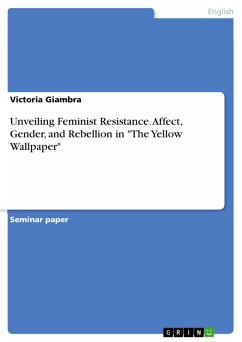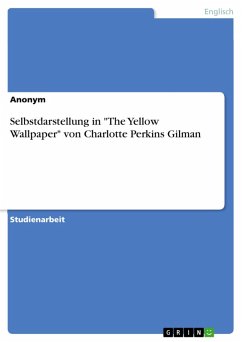Seminar paper from the year 2014 in the subject American Studies - Literature, grade: 1,7, Johannes Gutenberg University Mainz, language: English, abstract: This paper puts an emphasis on the representation of material world and things in Gilman's short story "The Yellow Wallpaper". It explores the question of how things of domesticity in the story are incorporated in narrators emotional and physical lives, how objects come to serve as a mediator of interiority, phantasy, and longing of the narrator, how the narrator follows the path of inanimate objects, and how these objects act upon her. In "The Yellow Wallpaper", Gilman depicts the feminist consciousness of oppression and injustice mirrored in private life of the nameless narrator; and gives the readers an example of the nineteenth century woman's life in realms of marriage, maternity, and domesticity. Gilman's short story is an example of a female protest against the negligent treatment of Victorian women in patriarchal society. She represents the relations of domination, power, and control by the relationship of the female narrator and her husband, John. However, the most significant point in this story, is the portrayal of the female narrator and her emotional engagement with objects of domesticity, which becomes the reflection of her relationship with John. For example, Bill Brown points out that capitalism and socialism created material culture that developed strong emotional attachments of humans to things. He emphasizes that engagement with material environment, passion for possession, accumulation, and consumption enabled humans "the feeling of success and the feel of identity". In "The Yellow Wallpaper", the narrator inhabiting the world of things begins to attribute the special value and the meaning to things, which gives her not a sense of success but rather that of failure and deprivation.
Dieser Download kann aus rechtlichen Gründen nur mit Rechnungsadresse in A, B, BG, CY, CZ, D, DK, EW, E, FIN, F, GR, HR, H, IRL, I, LT, L, LR, M, NL, PL, P, R, S, SLO, SK ausgeliefert werden.

